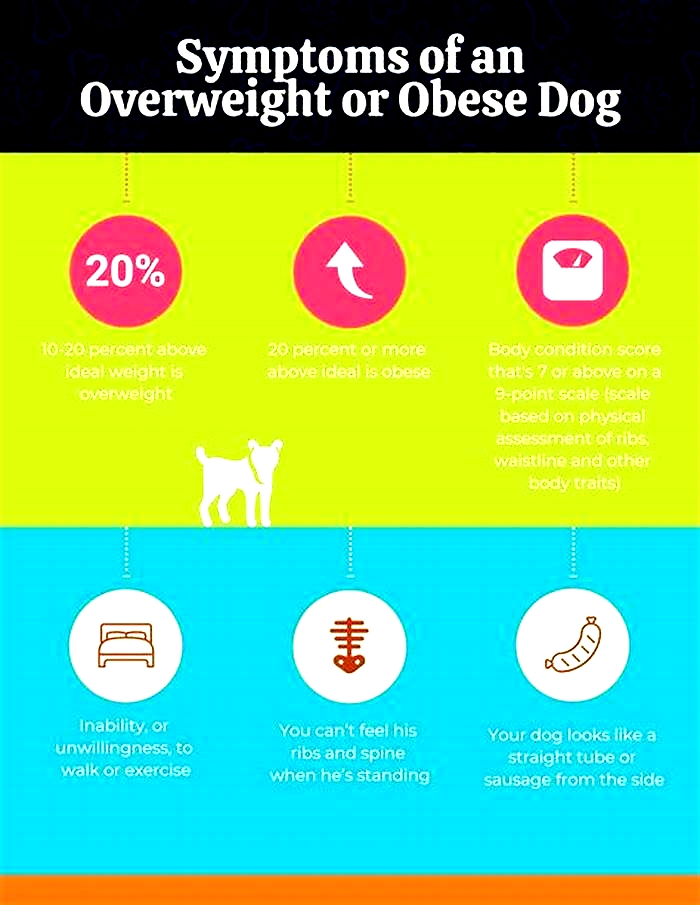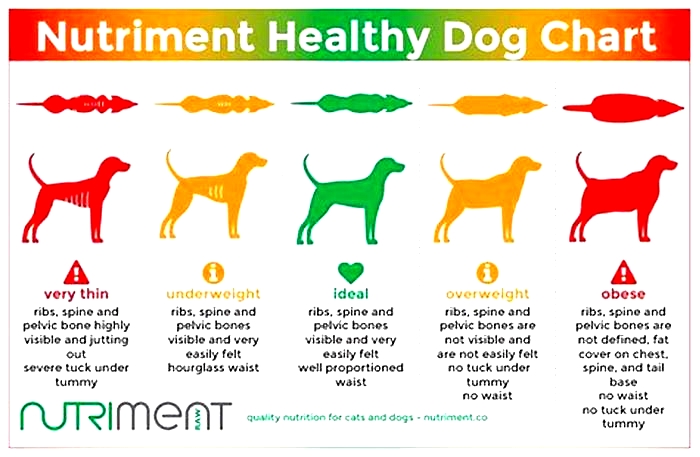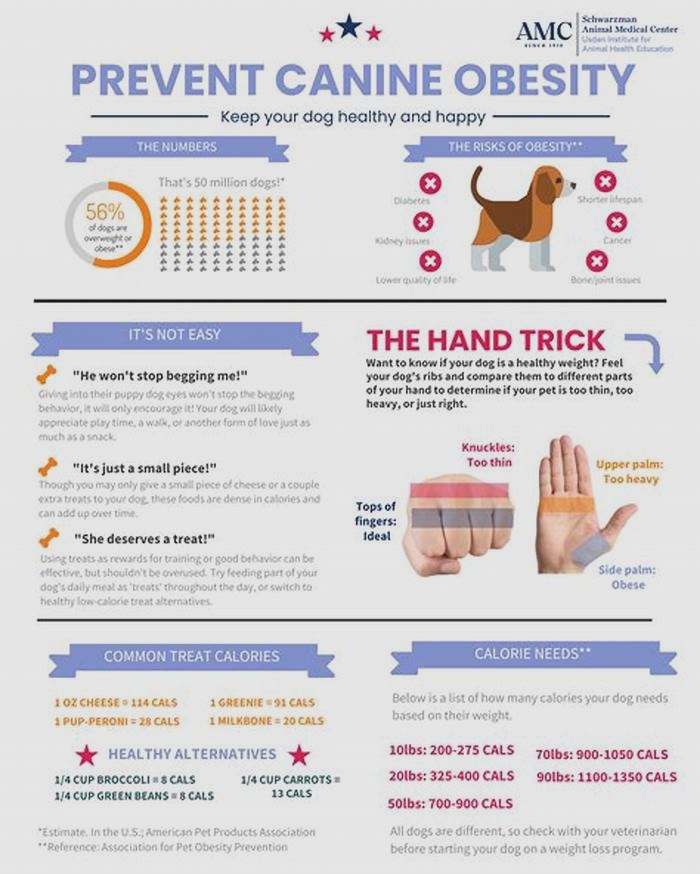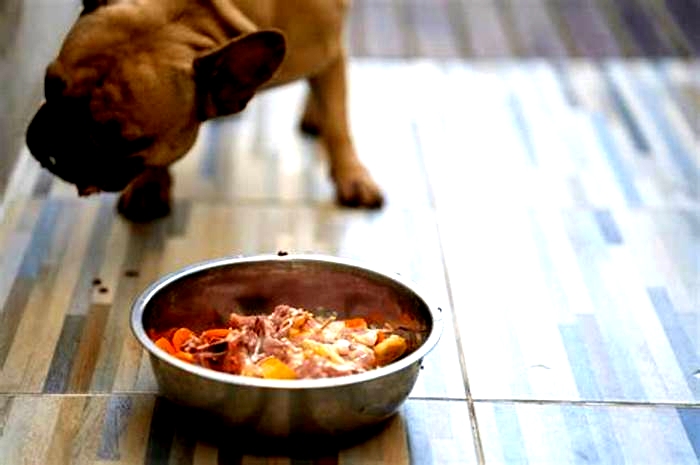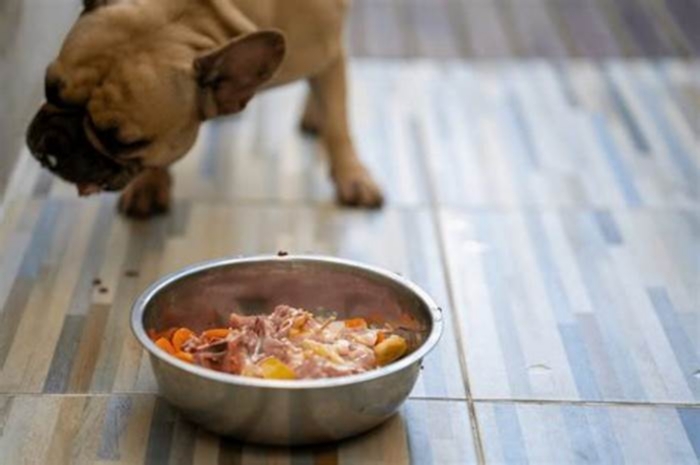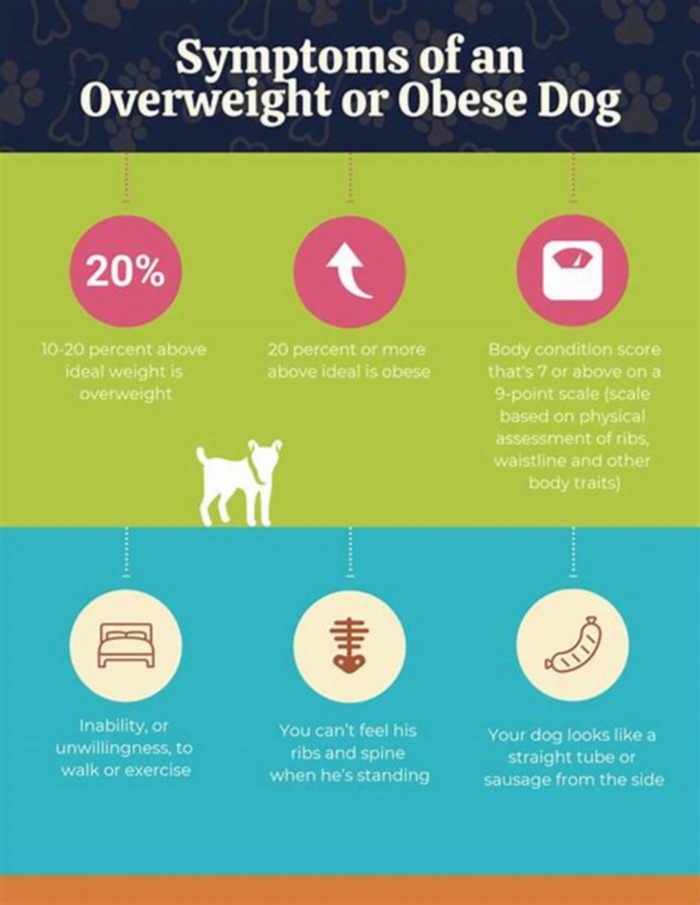Overcoming Canine Obesity Strategies for a Healthier Dog Diet

Common ways we mess up our pups nutrition
When you love your dog, you may feel the urge to spoil them with treats or come up with elaborate meal recipes. But some of the feeding choices we make out of love can turn into big mistakes depriving our dogs of necessary nutrients, overdoing fats or leaning too heavily on the magic of chicken and rice (which is supposed to be a temporary diet for upset digestive tracts).
Top tips for dog diets
- Feed a commercial diet that is certified as providing complete and balanced nutrition for your dogs life stage, or work with a board-certified veterinary nutritionist to plan a home-prepared diet that matches your dogs needs.
- Be conservative with treats. If you love giving your dog lots of little tidbits throughout the day, use low-calorie, low-fat snacks such as carrots or snap peas, or set aside part of their daily meals for treats.
- Make all diet changes gradually, and consider giving a probiotic during this transition period.
- Schedule an appointment with your veterinarian if your dog has chronic diarrhea or stomach upset to determine if there are other underlying causes.
Too many treats
When asked about where things often go awry with doggy diets, Dr. Joseph J. Wakshlag, section chief and professor of clinical nutrition, immediately responded, Too many treats!
It is common, even when the dog is on a commercial diet, that folks still like to feed treats or table scraps, Wakshlag says. Treats should be limited to no more than 15% of the daily calorie intake since these are often not complete and balanced foods, which may throw off nutrient intake.
Many veterinary nutritionists recommend limiting your dogs calories from treats to 10% of their total diet, especially if you are working on a weight-loss program. Even though many of us feel like we only give our dogs occasional table scraps, those bites add up quickly.
I was involved in a study looking at table-scrap feeding, or human foods to be more precise, and the average calories from these sources was about 20% of calories for the average dog, which is a bit too much, Wakshlag says. Veggies are often fine because they are low in calories, while the pizza crust, burger bites and fries are just way too high in calories, and can really lead to obesity and subpar nutrient intake.
The good news is that there are easy ways to get your dogs diet back in balance without denying them treats and snacks. Instead of feeding random food scraps, use part of your dogs primary diet as treats. Set aside part of each meal to use for training and random snacks. This is helpful both for weight-loss management and to ensure that your dog is eating a balanced diet.
Another option is to use healthy, low-calorie items as treats. Carrots, broccoli and snap peas are three examples that many dogs love.
Hazards of home-cooking
Home-prepared diets for dogs are increasing in popularity, but many veterinary nutritionists advise caution. It is critical to use a recipe that is deemed complete and balanced to make sure that your dog is getting everything that they need. For dogs with health conditions, a custom diet designed by a veterinary nutritionist is often the best plan.
If people are feeding home-prepared diets, this can be a problem, since there are a number of nutrients that are often deficient like calcium, B12, zinc, magnesium, etc., which can lead to subclinical deficiencies, Wakshlag says. The most egregious deficiency is usually calcium, which can lead to pathologic fractures in puppies and osteopenia with a risk of fracture.
But your dog can have their ground turkey cake and eat it too. If considering a home-cooked diet for your dog, ask your veterinarian to evaluate it for nutritional adequacy. Its very important to use vitamin and mineral mixes designed for home-prepared diets when feeding dogs, particularly if using primarily a meat-based diet plan, Wakshlag says.
Too much of a good thing
Our dogs love meats and fats, but overly rich foods dont always love them back. Overindulging can irritate your dogs pancreas and cause pancreatitis.
Pancreatitis is an extremely painful condition characterized by nausea, vomiting, lethargy, poor appetite, abdominal pain, diarrhea and fever. In severe cases, it can be fatal. Pancreatitis is treated with pain medications, anti-nausea medications and intravenous fluids. Most dogs who have survived pancreatitis have to stay on a strict, low-fat and low-protein diet for the rest of their lives to prevent recurrence.
Prevention is the best medicine when it comes to pancreatitis. Only give your dog small amounts of rich or fatty foods, especially if they have a history of having a sensitive GI tract. An occasional marrow bone is likely safe, but avoid making them a regular snack. (Also keep in mind that dogs can crack or break their teeth when chewing on these bones, or get hurt from splinters that break off and become lodged in their throat).
Long-term bland diets
Plain, boiled chicken and rice can save the day when your dog has diarrhea. Lean, cooked hamburger and cooked pasta are two other great options when your dog is sick and needs a bland diet to soothe their GI tract.
However, neither of these diets are balanced, and they are not safe to feed long-term because they have an incomplete nutritional profile.
If you find yourself whipping up a bland diet for your dog on a regular basis, then they may have a health condition more serious than a simple case of diarrhea. Some possible underlying causes include intestinal parasites, irritable bowel syndrome (IBS), pancreatitis, food intolerance, exocrine pancreatic insufficiency (EPI), Addisons disease, liver and kidney failure, food allergies or even cancer. The bland diet will help temporarily with your dogs discomfort, but wont resolve the underlying issue and may even make it worse over time.
Schedule a veterinary appointment to discuss your dogs symptoms and complete testing to figure out why your dog may still need a bland diet. Bloodwork, plus a fecal exam to check for parasites, is a great place to start. If those tests dont provide clear answers, your veterinarian may recommend additional blood tests, an X-ray or ultrasound, allergy testing or endoscopy.
Switching too quickly
If you need to change your dogs diet, do it gradually. Start by feeding 75% of the old diet mixed with 25% of the new diet. The next day, feed 50% of each diet, then on the third day feed 25% old and 75% new. This 4-day transition works for most dogs, but dogs with sensitive stomachs may need a longer, more gradual swap.
If you end up doing a sudden diet change, your dog may have some diarrhea because they arent used to the new diet yet. This is usually temporary and will resolve without treatment, but can be unpleasant for both of you. If the diarrhea lasts more than a day or two, or if your dog has other symptoms, call your veterinarian to get some probiotics or anti-diarrhea medications to help ease the transition.
This article has been reprinted with permission from the Cornell University College of Veterinary Medicines DogWatch newsletter, published by Belvoir Media Group. When you become a member of the Riney Canine Health Center, you will receive a free subscription to DogWatch.
Is Dog Owner Obesity a Risk Factor for Canine Obesity? A One-Health Study on HumanAnimal Interaction in a Region with a High Prevalence of Obesity
4.1. Animals
Demographic risk factors for the development of overweight status in dogs has been previously reported and include being middle-aged, female, and neutered [66,67], which is in line with our overall results detailed in . However, there is an increase with age in the proportion of dogs that had been neutered, so it is difficult to separate the effect of age from the effect of neutering [66]. Our global results regarding the effect of neutering in the risk of canine obesity do not differ from those published widely in the literature. Then, the effect of neutering as a risk of obesity is reduced or limited in our results. The high percentage of unneutered animals included in our survey (84.3%; 167/198) allow a better understanding of the contribution of the attitudes and behaviour of owners as a risk factor for canine obesity. We have found statistical differences (p = 0.042) in the comparison of the prevalence of obesity of intact females, 58.4% (45/77), with the intact males, 73.3% (66/90). In 2005, McGreevy et al. [66] did not show a relationship between obesity and the sex of the dogs. Our results also agree with those published by Mao et al. [29], which found a higher percentage of obesity in intact males (47.3%) compared with females (38.7%). Pegram et al. [22] found similar risk estimates in female neutered dogs (OR = 1.89) and male neutered (OR = 1.90), whilst male intact dogs had 1.23 times the odds (95% CI 1.04 to 1.46) of overweight status compared with intact female dogs. Moreover, a later study published by Bjrnvad et al. [68] evidenced that neutering dramatically increased both BCS and the risk of being heavy/obese in male dogs, but not in bitches. This is particularly interesting when other factors, such as the attitudes and behaviour of owners, as described by Bland et al. [32] may contribute to the risk of obesity. On the other hand, neutering cats has been shown to increase the risk of obesity, but long-term studies have not shown a correlation between age at neutering and risk of obesity [69]. Thus, future studies are needed to clarify the contribution of the dog sex and neuter status to the risk of obesity in different geographical and socio-cultural societies around the world.
4.2. Dog Owners
In our study, dog owner overweight was found to be the most important factor in the occurrence of obesity in dogs. Dogs of overweight owners were >3 times more likely to be obese (OR = 3.05; 95% CI 1.575.82; p = 0.001). Moreover, we found a positive relationship between the degree of obesity of dogs and the BMI of their owners; 66.4% of the owners of overweight/obese dogs were also found to have overweight. The positive relationship between the weight of companion animals and that of their owners has been previously described [2,30,49,51]. However, further studies are needed to understand the relationship between owner obesity and dog obesity and to determine the exact mechanism underlying the obesity association between them.
In agreement with van Herwijnen et al. [70], our results indicate that owners may apply their personal attitudes and behaviour to their pets. In obese people, this behaviour has been referred to as an obesogenic lifestyle eating in excess and inactivity [70]. Additionally, sex differences in human obesity have been reported and have been associated with sedentary lifestyle. Another study by Hermann et al. [71] also confirms that women with a university degree had a 2.1 kg/m2 lower BMI as compared to women with the lowest level of education. The owner shares this obesogenic lifestyle with their pets, which could be considered an indicator of over-humanising. The correlation between dog obesity and human obesity from a One Health approach has recently become the subject of research [49].
4.3. HumanAnimal Interaction
Dog obesity is influenced by their owners attitudes, and it is quite possible that those same attitudes influence an owners health status. This could explain why in both our study and in others, there is a correlation between obesity in owners and their dogs [30,49].
Muoz-Prieto et al. [51] clearly showed that obesity in dogs is affected by the interrelationships between food management, exercise, and social factors. These are causes shared by man and dog and give rise to the high incidence of this process in man in the Canary Islands (Spain), which, as mentioned above, is an obesogenic risk area [8,72].
The identification of animal overweight by dog owners is a major concern for veterinary practitioners, animal health, and nutrition companies [32,54,55,59,73]. Our study also reveals that obese owners with obese dogs consider their dogs to be healthy (86%). Another study conducted in 10 European countries also revealed that dog owners did not perceive obesity in dogs to be a disease [51]. Therefore, the belief that obesity is not a health problem may negatively impact the quality of dogs life. On the other hand, in the social media and the animal welfare literature, we have found a current discussion regarding the potential of prosecuting dog owners for animal cruelty because of allowing animal obesity to progress to extremes. Some countries have started to view overfeeding/underexercising as a form of cruelty. The APOP has echoed these social discussions [20].
In addition, our results indicate that women are more likely to have overweight/obese dogs than men, especially if owners do not exercise. Abdominal obesity is more common in Spanish men than in women [6]. However, a sedentary lifestyle is more common in women than in men in Spain [74]. Differences in sex fat distribution and in eating behaviour may also play a key role in the fat distribution [6].
Interestingly, obesity levels in dogs did not differ between dog owners who smoke (p = 0.522) and drink alcohol (p = 0.226) and those who do not. It is important to point out that 73.91% (17/23) of the owners with overweight/obese dogs and a low level of education or no formal education were also overweight/obese, and 59.9% (82/137) were women. This latter finding is in line with the study conducted by Perez-Rodrigo et al. [5], which shows that obesity rates are higher among women aged 45 years or over, of a lower social class, and living in semi-urban areas.
A strong correlation between pet owners with low levels of education and obesity in their dogs has been found in our study (p = 0.002). However, according to the logistic regression model used, the calculated probability of dogs obesity when owners education levels are low was not significant (p = 0.535). Therefore, we cannot estimate the risk of obesity in the dog when the owners education levels are low. Similarly, human obesity is 5% more prevalent in the lowest level of education than more educated subpopulations in Spain [75]. In many developed countries with high incomes, obesity is inversely associated with the level of education. Our findings agree with those of Marques-Vidal et al. [76], who found a greater prevalence of obesity in the low-education strata of the population.
In the present study, we have found that the majority of overweight owners of dogs were women, 55.2% (63/114), albeit with no significant differences in comparison with male owners. A recent study found that the variables related to an increased body fat index (BFI) and Body Condition Score (BCS) in the dog were the sex of the owner (men were more susceptible than women) and also whether the owners had unhealthy habits (for example, smoking) [51]. These data contrast with those found in our study, where the sex of owners of obese dogs and the influence of healthy habits on the dogs BCS was not significant.
Regarding the age of the owners, several scientific studies have shown that the age of the owner is a risk factor for dog obesity. Muoz-Prieto et al. [51] calculated that risk in the European population (OR 1.1, 95% CI 0.651.21; p = 0.046). Thus, the dogs of older owners are more likely to be obese. We found a similar finding in our study where most owners of overweight dogs were 40 years old or older (p = 0.016). However, according to the logistic regression model used, the calculated probability of dogs obesity when owners were 40 years old or older was not significant (p = 0.274). Therefore, we cannot estimate the risk of obesity in the dog when owners were 40 years old or older. Endenburg et al. [13] have described owners of obese dogs as having less interest in dog nutrition than owners of normal weight dogs. Similarly, we have found that almost 25% of dog owners with overweight were in the low-level education bracket or had no formal education; 73.9% of these people were also obese and the majority were women.
According to Endenburg et al. [13], owners of obese dogs do not engage in physical activity with their dogs. Owning a dog has been linked to increased physical activity, decreased obesity rates, overall health benefits and a lower mortality rate than the general population [77,78,79]. However, in our population, the percentage of dog owners who were overweight/obese was quite high (66.4%), indicating that having a dog does not necessarily protect people from being overweight. We found that most dog owners with overweight (62.77%) did not engage in physical exercise and the majority were women. Numerous factors may influence the relative ease with which weight is gained by dogs, and these include genetics, age, reproductive status, the amount of physical activity, and the calorific content of the diet. Other recognised associations in dogs include an indoor lifestyle, inactivity, and middle age [13].
The owners perception of obesity in themselves and their dogs also requires further investigation in the search for potential ways to improve the prevention and control of obesity. However, good communication between owners and veterinarians is important for adherence to diet and physical activity recommendations [1], and any obesity preventive measures must be targeted according to the owners educational level [76]. With the combination of a calorie-restricted diet and increased physical activity by exercising together, it is possible for both pet owners and their dogs to lose weight [51,80,81,82].
4.4. Limitations
The average prevalence of human obesity in Spain can be somewhere in the middle between the northern European countries, with low proportions of obesity, and the USA and eastern European countries, with higher rates. However, the Canary Islands (Spain) must be included in the areas with a higher proportion of obesity (higher than 20%) [7], and, therefore, it is considered an obesogenic risk zone [8,72]. Therefore, the results of the present study may be biased due to the special characteristics of the population studied.
Another limitation is the possible underestimation of overweight status by veterinary professionals, which is well-recognised in the literature [83,84]. However, the criteria for the definition of overweight and obesity status in dogs based on BCS were explained in detail to all the veterinarians before their participation in this study to reduce reporter bias. On the other hand, all the owners were evaluated by the same physicians and the calculation of the BMI scores results in more precise data with low reporter bias. Another limitation of our study is concerned with the perception of people about obesity and overweight of their pets. This limitation has been reported in the literature [51,52].

